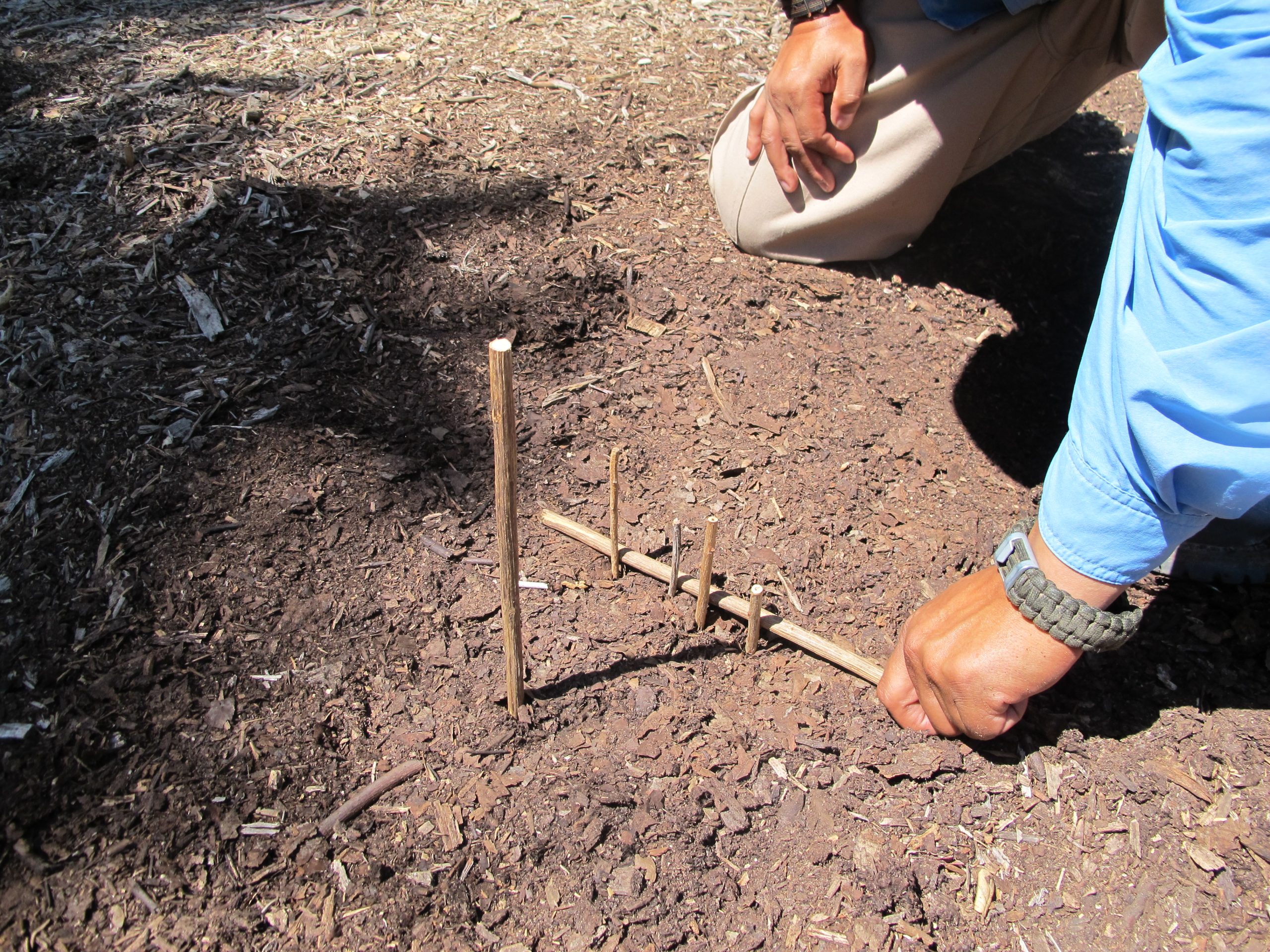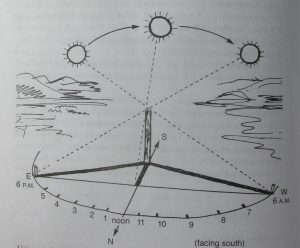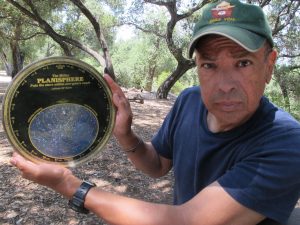Christopher Nyerges
[Nyerges is the director of the School of Self-Reliance, and the author of many books. See more at www.SchoolofSelf-Reliance.com]
Navigation generally refers to all the method and devices that have been developed over the centuries for finding our way from place to place, and not getting lost. Originally, all our navigation methods were observations of the natural world, such as the way plants grow, where moss grows, how snow melts, the position of the sun and moon, the position of the stars, as well as the use of the full spectrum of devices for making these observations.
Modern people rarely think about north vs. south, the divisions of time, or how these things are figured, adjusted, or corrected. Why? We’ve let our technological tools do this work for us, and as an unintended consequence, we’ve grown increasingly unaware and ignorant of our surroundings.
OBSERVING THE SUN
A lot can be learned by simply observing the path of the sun throughout the year.
The Sun is a major indicator of direction. The sun rises in the east, slowly moves across the sky, and sets into the west. That’s the general idea, though it’s a bit more complex than that.
Making a simple sun compass/sun clock
(AS03)
Pound a stick into the ground. Make sure it’s solid, and not wobbly. Now put a pebble at the end of the shadow. Wait 20 minutes or so. The shadow will have moved, so put another pebble at the end of the shadow. Wait another 20 minutes and do this again.
In general, when you are in the northern hemisphere, your shadow will be pointing generally northward if the stick is stuck vertically into the ground.
The shadow’s movement, marked by the pebbles, will be eastward, because the sun moves west-ward. The shadow should be the shortest around noon, when the sun is directly overhead (directly overhead at 1 p.m. if there is Daylight Savings Time).
If you now draw a straight line from the stick to the stone marking the shortest shadow, you should have a north-south line, more or less. A perpendicular line gives you an east-west line, and your crude compass.
“It is important to hold on to the idea that there is nothing about the movement of the sun that cannot be understood by putting a stick in the ground and watching its shadow.” –Tristan Gooley.
THE NIGHT SKY: THE STARS AND THE MOON
Understanding the night sky: Basic Principles
The earth revolves on its axis in a period that takes 23 hours and 56 minutes. The earth revolves around the sun in a period of about 365 days. These movements create the illusion that the sun moves across our sky from east to west. These movement also create the illusion that all the stars are revolving as well. Basic Astronomy 101.
(AS01)
The NORTH STAR
If you’ve ever seen a photo where all the stars appear to rotate around a single point, that single point is the North Star! In the northern hemisphere, the North Star will appear to be stationary, and all the other stars will appear to rotate counter-clockwise around it. If you were standing on the north pole, the North Star would be directly overhead. Time lapse photography which shows all the stars in a twirl is actually capturing the rotation of the earth.
Let’s find the North Star. Begin by locating the Big Dipper. The North Star is in a direct line with the two end stars of the Big Dipper (see illustration). If you’re just starting out, you should determine where the northern part of the sky is located so you’re not looking in the wrong part of the sky.
(AS04)
Locate the outer two stars that comprise the “dipper.” We call that distance x. Those two stars are in a more or less direct line to the north star. If you continue a line with a distance of 5x, in the direction that the dipper would be pouring, you find the north star! Wow, people who are seeing it for the first time often say. That’s the North Star? Not all that bright.
If you know north, you obviously know south, and perpendicular to your imaginary north-south line is east and west. If you can find the north star in the Northern Hemisphere, you now know all your cardinal points!
You should take the time to also get to know Orion, which is another good constellation for telling directions. (Check out my book, “Guide to Getting Around Without a Compass”).
When you take more time to observe your environment, you’ll get better and better at telling direction, even without a compass or map. Nevertheless, I’m a big fan of carrying a map and compass, and knowing how to use them properly. We’ll talk about that more in the future.
(AS05)
Captions:
AS-01: A diagram which illustrates how you can determine direction by placing a stick in the ground, and marking the tip of the shadow. In the northern hemisphere, the shadow will (mostly) be to the north of the main stick, and the shadow will move east as the sun moves west. By placing a marker periodically at the tip of the moving shadow, you will be defining and east-west line.
AS-02: (Featyred Angelo places a stick horizontally on the ground, defining the tip of the shadows in the past hour or so. The stick defines an east-west line.
AS-03: The shadow method for determining east-west is accurate enough for adjusting your map to the terrain.
AS-04: A view of the big dipper, and how to find the North Star from the two back stars of the Dipper. Don’t forget: In the northern hemisphere, all stars will appear to rotate counter-clockwise around the north star, in a cycle that takes 23 hours and 56 minutes, so the Big Dipper will always be in a different position in the sky, depending on when in the year, and when in the night, you attempt to observe it.
AS-05: Enrique Villasenor shows the Miller Planisphere, a popular device for assisting in the finding and identifying stars and constellations.





